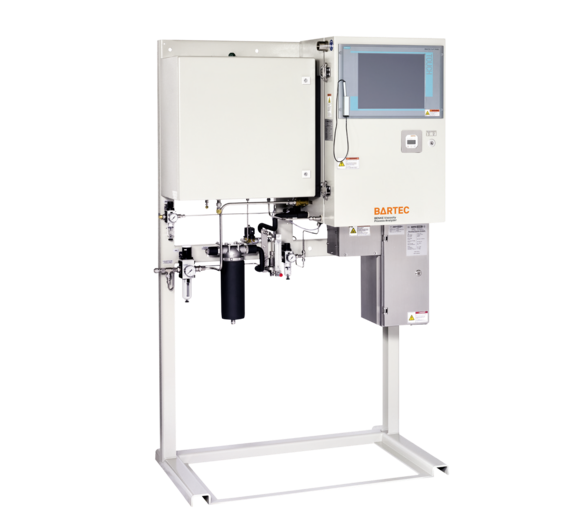


Rapid Viscosity Process Analyzer

TF:
003934-HW-WIN-O34
Overview
To remain competitive, today’s refiners must employ all optimization and product control techniques available. The use of online physical property analyzers is one of the key features to reach those objectives because they measure important quality properties in the process directly.
| Technology | continuously analyzing kinematic viscosity, capillary-type |
|---|---|
| Method | compliant with: ASTM D445, DIN EN ISO 3104, IP 71 |
| Sample at inlet | filtered 10 μm or 50 μm (depending on the viscosity measuring range), bubble-free max. viscosity = end of measuring range (technical clarification required) (sample as coolant ≤ 10 cSt) 3.8 to 10 l/h (depends on variant) 3 to 14 bar (43.5 to 203 psi) for L + M Versions: TM *-35 K<tinlet tm k for h versions: depends on td> </tinlet> |
| Sample at outlet | can handle back pressure (on request) |
| Electrical data | max. 8 (4 to 20 mA; 1000 Ω); active isolated on request 4 to 20 mA; 160 Ω 24 V DC; max. 0.5 A high: 15 to 28 V DC/low: 0 to 4 V DC 24 V DC; max. 0.8 A |
| Communication | MODBUS/RTU via RS485 or RS422 or FOC is MODBUS/TCP via FOC is ethernet available kinematic viscosity (others on request) Alarm, Ready/Valid; Stream Selection, Validation Request, Reset |
| Ambient conditions | operation 5 to 40 °C (41 to 104 °F) storage -20 to 60 °C (-4 to 140 °F) operation 5 to 80 % relative humidity, non-corrosive; storage 5 to 80 % relative humidity, non-corrosive IP 54 (comparable with NEMA 13) |
| HMI | touch display 19" remote access on request cyber security operating system Windows10 enterprise LTSB Bartec Benke control software PACS |
| Process connections | tube fittings: typically Swagelok 6mm/12mm/18mm; others on request sample inlet up to 2 sample streams and 1 validation stream sample outlet vent line (if required) coolant (if required) |
| Weight and dimensions | approx. 250 kg (W x H x D) approx. 1190 x 1930 x 710 mm free space right: 150 mm/left: 100 mm |
All fluids that fulfil the conditions of Newton’s friction law are referred to as Newtonian fluids. Their viscosity is a material constant, which is only dependent on pressure and temperature. The viscosity for incompressible and Newtonian fluids can be derived from the so called Hagen-Poiseuille law. The fluid is assumed to flow under laminar conditions.


